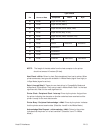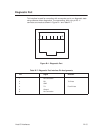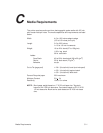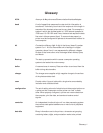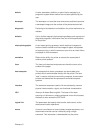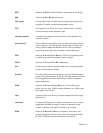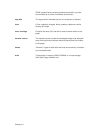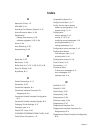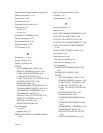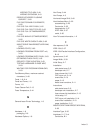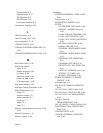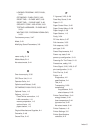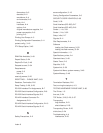Glossary–3
MPP
Acronym for
Maximum Print Position. Also known as line length.
NMI
Acronym for
Non-Maskable Interrupt.
non impact Printing which does not result from any mechanical impact onto
the paper. Example: an electrophotographic printer.
OPC The material of the OPC drum is an insulator when in the dark
and is conductive when exposed to light.
operating system A collection of programs that control the overall operation of a
computer system.
parity (check) Parity checking is the addition of a non–data bit to data, resulting
in the number of “1 bit” being either always even or always odd.
Parity is used to detect transmission errors. Parity represents
value in the check digit of the received or transmitted data.
PCB
Acronym for
Printed Circuit Board. A PCB is an insulating board
on which circuit paths have been printed or etched.
PCBA
Acronym for
Printed Circuit Board Assembly.
port A data channel used for receiving data from or transmitting data
to one or more external devices.
protocol The rules and conventions that govern communication between a
printer and a host computer. A protocol includes codes for printing
text and graphics and codes instructing the printer to perform
special operations.
RAM
Acronym for
Random Access Memory. Can be read from or
written to at any time. RAM is volatile: Whatever is in RAM is lost
when power is turned off.
read To retrieve data from memory or mass storage (hard disk, floppy
diskette, etc.).
resolution A measure expressing the number of component units in a given
range used to create an image; in printing, expressed as the
number of dots per inch (dpi) horizontally and vertically.
ROM
Acronym for
Read Only Memory. Programs, instructions, and
routines permanently stored in the printer that cannot be written
to. Files in ROM are not lost when power is turned off.



